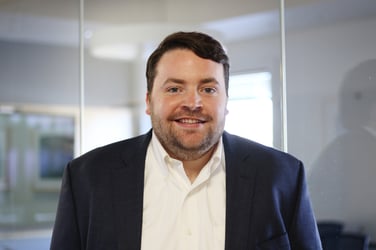Nordic Senior Consultant Carl Swift recently attended the 2018 North Carolina HIMSS Annual Conference. We sat down with him to discuss what he learned from the meeting and his advice for healthcare organizations coming out of the discussions.
 The biggest topic among health IT leaders at the moment seems to be achieving a return on their EHR investment. It’s hardly surprising that everyone is talking about it. After all, EHR implementations total in the tens (if not hundreds) of millions, and part of the system’s promise is that, long-term, it will reduce cost as well as improve outcomes.
The biggest topic among health IT leaders at the moment seems to be achieving a return on their EHR investment. It’s hardly surprising that everyone is talking about it. After all, EHR implementations total in the tens (if not hundreds) of millions, and part of the system’s promise is that, long-term, it will reduce cost as well as improve outcomes.
The key to achieving this return, I learned at the recent North Carolina HIMSS Annual Conference, is to focus on the word long-term. With technology advancing so quickly, it’s easy to get hung up on the latest shiny new thing and neglect to optimize your use of the system.
In reality, a strategic, long-term approach to optimization is the only thing that will make the EHR pay for itself (even if it doesn’t feel that way for the first few years).
In one of the sessions I attended, a large health system talked about their efforts to reduce its employee healthcare costs. The organization decided to deploy a set of best practice advisories (BPAs) that would encourage patients to pursue preventative care, such as reminding them to schedule an annual check-up. The organization’s ultimate goal was to reduce the cost of the insurance it provided to employees and to eventually use the initiative as a model to reduce patient costs as well.
Seven years down the line, they’ve reduced employee healthcare costs by 25 percent. But that cost reduction didn’t kick in immediately; in fact, the first year saw an increase in cost. They could have given up and pursued a newer and more politically appealing project. But instead, they stuck with the project and realized a massive savings.
Another healthcare system talked about the work they’ve done to get providers on board with their IT systems and processes. Initially, many providers were hesitant and even angry about having to use the EHR. To gain their allegiance, the organization used system data to show that certain patient populations had seen drastic improvements in their health since the implementation of the EHR. Once providers could see that a patient group had seen incredible declines in sepsis since the EHR was implemented, they bought in. Data did the job that a thousand pep talks or forced trainings probably wouldn’t have.
But as with the first system, the results weren’t immediate, and the process wasn’t easy. It takes time and money to optimize the system and interpret the goldmine of data it contains. You must have faith that your effort will pay off.
The biggest lesson I took from the conference was that to generate a return on investment, you have to approach the system statistically and methodically. You must buy into the idea that your EHR is an incredibly powerful tool – and that if it’s not working for you, at least part of the problem is that you could be using it better.
Take a leap of faith, and invest in aligning your strategy, technology, and operations to make the system work. In five to 10 years, you’ll be significantly ahead of your competition, and you’ll be on your way to realizing the ROI that others are still considering a far-off fantasy.
If you’d like to discuss the NC HIMSS Conference or any other insights you’ve heard recently, please reach out. We’d love to talk.
